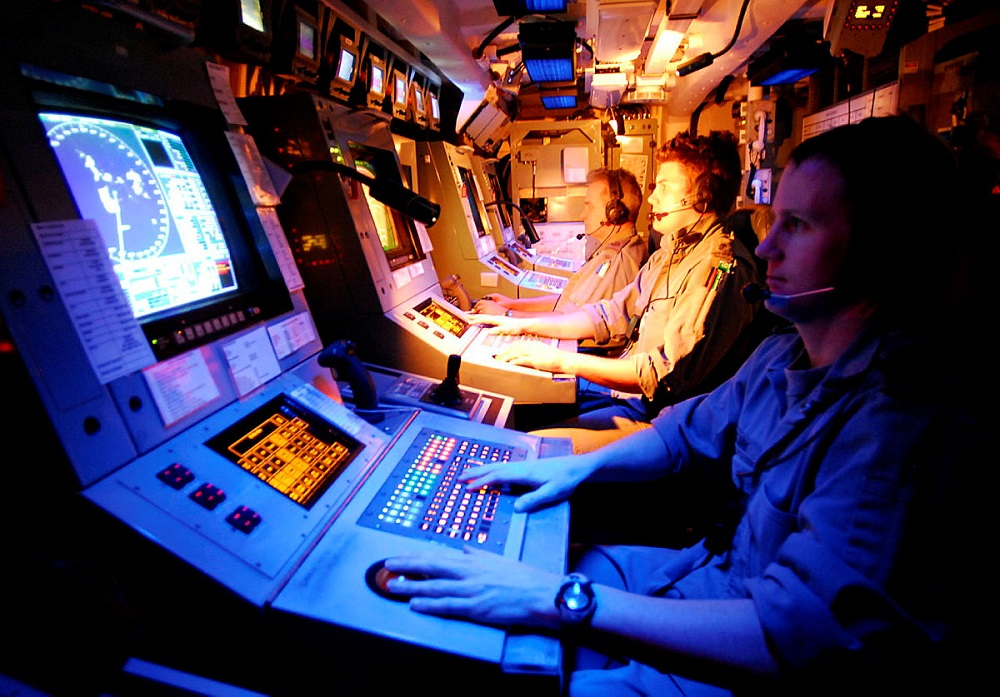
During my nine years as a nuclear trained surface warfare officer in the US Navy, I qualified in integrated undersea surveillance systems (IUSS) and became lead trainer for my command. I believe that for Australia to deal with the diminished warning time identified by its defence strategic review (DSR), and to reinforce the Australian Defence Force’s deterrent capabilities then it must place a greater emphasis on these systems.
Three primary areas of focus can be started immediately: increasing joint training in undersea monitoring and engagement with the US Navy, improving protocols for sharing data and tracking information among the ADF and its allies, and maximising joint operations and interoperability. This would supplement pillar one of the AUKUS agreement immediately at affordable cost to meet a strategic need identified by the DSR.
As it is currently constituted, training within the Royal Australian Navy for sonar technicians, the primary operators of IUSS equipment, consists of fairly standard schoolhouse instruction throughout the sailor’s career, and on the job training aboard naval vessels. All of this takes place within the RAN. While this produces excellent operators, it does not involve sharing best practices or drive innovative war fighting and can lead to friction during joint exercises. While multilateral exercises such as Integrated Battle Problem 23-3 give invaluable joint operational experience, these are rare and do not encompass the whole force. There are also exchange programs where a handful of officers or enlisted sailors are stationed with the US navy for training or a tour of duty. But this only gives a small number of sailors hands on experience with American forces.
Conducting joint IUSS training, from classroom training to live events, should be at the forefront of RAN and US Navy planning and should build on existing exchange programs. This would allow existing budget line items to be used and permit an immediate ramp up.
When I coordinated joint forces in the Arabian Gulf, I saw at first hand the learning curve new vessels faced when they joined the joint strike group. They used different wording on communications and made different assumptions on how to execute commands. Bringing together the two navies will drive innovation and help maintain their strategic edge in IUSS operations as well. Conducting more joint training would minimise friction points and improve the effectiveness and interoperability of the two navies as they work to maintain safe and stable waterways throughout the Indo-Pacific.
Ensuring the RAN and US Navy share acoustic data and tracking information is essential as they collaborate in the region. Joint data processing would greatly improve RAN warning times throughout the area of operations and improve response time to potential threats.
While there are security and classification concerns with this, existing workarounds can be used to minimise potential leaks while maximising effectiveness. Having sailors cleared to see classified data from both countries, or temporarily restricting the ability to view sensor readings while sensitive data is being received are already practised and are measures easy to implement in new watchfloors. Data sharing is vital to developing a common operating picture among allies, improving strategic decision making and lowering the cost in manpower and funding to the individual countries.
This will provide the added benefit of building off the joint training conducted to improve interoperability and minimise the learning curve when conducting operations.
Knowing that multiple interested nations are monitoring undersea movements, and that they are cooperating to ensure safe navigation and operations, will provide a strong deterrent to any would be malicious actors. Given the clandestine nature of undersea operations, the ability to identify and expose malicious activities, and to rapidly respond with a variety of policy measures, will deny an adversary the ability to act with impunity and will act as a strong deterrent.
The overall thrust of the integrated training and data sharing should be increased interoperability and joint operational effectiveness. Integrated joint operations and shared watchfloors provide numerous benefits, but the most important would be the increased ‘on scene’ time it provides all allied participants.
The US and Japanese navies have eight surface ships outfitted with SURTASS passive towed array sonar equipment in the Indo-Pacific. With the RAN’s purchase of the modular variant of SURTASS and its future deployment on its ships, there’s an opportunity to conduct extensive, long-term monitoring throughout the Indo-Pacific.
Due to the nature of submarine operations, the increased time on station drastically decreases the chances of contacts of interest being missed. This would allow for a more robust response further from sensitive areas on the Australian coast or near allied military installations. Combined with the efforts to develop RAN nuclear attack submarine capabilities, this will dramatically improve ADF readiness over the near, and medium to long term.
The DSR rightly notes how defence planning must shift to meet the loss of effective warning time. Bolstering and integrating IUSS capabilities within the ADF and regional partners quickly is imperative to maintain regional security with improved warning time. Coordinating training between the RAN and the US Navy will strengthen the ability of both to coordinate and execute joint operations. Sharing data and tracking information puts more eyes on an integral, yet volatile, region while spreading the costs in manpower and equipment. Working toward routine joint operations and shared watch floors spread costs among allied forces and act as a force multiplier.
This multifaceted approach capitalises on existing cooperation between Australia and the US, allows for scaling at relatively low cost, and will provide a strong deterrent to those who would threaten freedom of the seas. There’s more to undersea warfare than submarines, after all.

